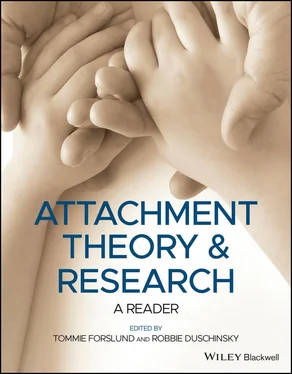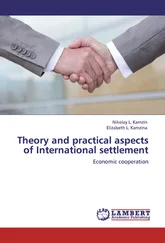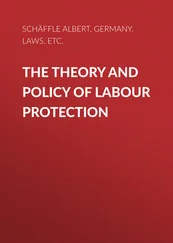1 ...8 9 10 12 13 14 ...30 4 Separation anxiety results from the small child, owing to his ambivalence to his mother, believing when she disappears that he has eaten her up or otherwise destroyed her, and that in consequence he has lost her for good. Following Melanie Klein ([1935] 1952) we can call it the theory of Depressive Anxiety.
5 Following the projection of his aggression, the young child perceives his mother as persecutory: as a result he interprets her departure as due to her being angry with him or wishing to punish him. for these reasons whenever she leaves him he believes she may either never return or do so only in a hostile mood, and he therefore experiences anxiety. Again following Melanie Klein, this can be termed the theory of Persecutory Anxiety.
6 Initially the anxiety is a primary response not reducible to other terms and due simply to the rupture of the attachment to his mother. I propose to call it the theory of Primary Anxiety. It is the counterpart to theories which account for the child’s tie to his mother in terms of component instinctual responses. It has been advanced by James (1890), Suttie (1935) and Hermann (1936), but has never been given much attention in analytic circles.
The hypothesis I shall be adopting is the sixth, since it stems directly from my hypothesis that the child is bound to his mother by a number of instinctual response systems, each of which is primary and which together have high survival value. Soon after birth, it is held, conditions of isolation tend to activate crying and a little later tend to activate both clinging and following also; until he is in close proximity to his familiar mother – figure these instinctual response systems do not cease motivating him. Pending this outcome, it is suggested, his subjective experience is that of primary anxiety; when he is close to her it is one of comfort.
Such anxiety is not to be conceived merely as a ‘signal’ to warn against something worse (though it might subsequently come to have this function). Instead, it is thought of as an elemental experience and one which, if it reaches a certain degree of intensity, is linked directly with the onset of defence mechanisms. It is because of this, and because I wish to distinguish it sharply from states of anxiety dependent on foresight, that I have termed it Primary Anxiety. 5
Although I believe states of primary anxiety due to separation to be among the most frequent and pathogenic of such states, it is postulated that primary anxiety will arise in other circumstances also – perhaps whenever any instinctual response system is activated but not terminated. Primary anxiety due to separation seems likely, therefore, to be but one example of a common condition. It has, however, several special features. Not least of these is its specially close linkage in infants and young children to the experiences of fright and fear. When frightened, infants and young children look to their mother for security and if they fail to find her are doubly upset: both comfort and security are missing.
It is interesting, though by no means easy, to compare the theory of primary anxiety with Freud’s two theories. The similarity to his original one of Transformed Libido is close. Although on occasion Freud spoke as though libido could only be transformed into anxiety after it had first been repressed, this does not appear to be basic to his formulation. Indeed, in his discussion of the conditions which lead anxiety to become pathological the process inculpated is repression (Freud, 1909, p. 26); in the absence of repression, we may therefore infer, there would still be anxiety, but it would be within normal limits. If this is a correct reading, then the main difference appears to be that, whereas in the theory advanced here primary anxiety is an immediate consequence of the persistent activation without termination of certain instinctual response systems, in Freud’s theory anxiety is conceived as being the result of a ‘transformation’ which the libido undergoes.
The theory of primary anxiety appears to differ more from Freud’s second theory, that of Signal Anxiety, than from his first. The principal difference here is that Freud postulates that a fairly complex process of motor learning must have occurred. The other difference, though it is not logically necessary for his position, is that he postulates also some awareness in the infant of causal relationships. The theory advanced here on the other hand makes no such assumptions and, instead, sees the anxiety as primitive and dependent only on simple orientational learning. Nevertheless, it must be remembered, Freud also postulated the existence of a primitive biologically based anxiety which is evoked by separation, and it is therefore useful to compare the two views. In Freud’s theory this primitive anxiety is conceived as resulting from the instincts serving the infant’s bodily needs , e.g. for food, becoming active and not being satisfied: in the theory here advanced it is conceived as resulting from the instinctual response systems underlying attachment behaviour (notably crying, following, and clinging) becoming activated and remaining so. Thus in both cases the primitive anxiety is conceived as resulting from instinctual systems which, whilst gratified by the mother’s actions or presence, remain ungratified in her absence; or, in terms of the conceptual framework used here, from instinctual responses which, whilst terminated by the mother’s actions or presence, remain unterminated in her absence. The essential difference therefore lies in the nature of the instinctual systems postulated as being involved.
At first sight the theory of primary anxiety may also seem to have something in common with the Birth Trauma theory. For instance, some might argue that, if anxiety is experienced at birth, it is no more than one example of primary anxiety arising from separation. However, this seems to me improbable since, like Freud (1926, pp. 130–131), I am not satisfied that true separation anxiety is present in the earliest months. 6 The birth trauma theory is not regarded as having explanatory value.
Whilst the theory of primary anxiety postulates that separation anxiety is itself an unlearnt and biologically based anxiety, it is far from blind to the existence and pathogenic importance of anxieties which are dependent on learning and anticipation. In the human it seems useful to distinguish at least two main forms of anticipatory behaviour – that based on primitive forms of learning, such as conditioning, and that based on memory organized by means of symbols. As soon as infants can be conditioned, which is very early, they can acquire a simple form of anticipatory behaviour and, in so far as the events to which they are conditioned are disagreeable, such for example as pain, hunger, or lack of human contact, they may be supposed to experience anxiety. This I shall term Conditioned Anxiety . Cognitively, it is still rather a primitive form of anxiety and in many ways more closely resembles primary anxiety than the form next to be described. Later, when the infant develops his capacity for using symbols and can thereby construct a world of objects existing in time and space and interacting causally, he is able to develop some measure of true foresight. Should the foreseen events be of a kind he has learned are disagreeable, he will once again experience anxiety. This I shall term Expectant Anxiety . Once this level of psychic organization is reached many kinds of danger, real and imaginary, may be foreseen and responded to. For example, whatever may occur at more primitive levels, at this level both persecutory and depressive anxieties play a crucial role; for anything which leads the child to believe he either has destroyed or alienated his mother, or may do so, cannot fail to exacerbate his expectant anxiety of temporary or permanent separation.
Читать дальше












